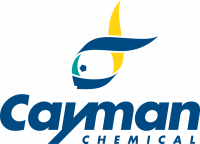Cookie-Einstellungen
Diese Website benutzt Cookies, die für den technischen Betrieb der Website erforderlich sind und stets gesetzt werden. Andere Cookies, die den Komfort bei Benutzung dieser Website erhöhen, der Direktwerbung dienen oder die Interaktion mit anderen Websites und sozialen Netzwerken vereinfachen sollen, werden nur mit Ihrer Zustimmung gesetzt.
Konfiguration
Technisch erforderlich
Diese Cookies sind für die Grundfunktionen des Shops notwendig.
"Alle Cookies ablehnen" Cookie
"Alle Cookies annehmen" Cookie
Ausgewählter Shop
CSRF-Token
Cookie-Einstellungen
FACT-Finder Tracking
Individuelle Preise
Kundenspezifisches Caching
Session
Währungswechsel
Komfortfunktionen
Diese Cookies werden genutzt um das Einkaufserlebnis noch ansprechender zu gestalten, beispielsweise für die Wiedererkennung des Besuchers.
Facebook-Seite in der rechten Blog - Sidebar anzeigen
Merkzettel
Statistik & Tracking
Endgeräteerkennung
Kauf- und Surfverhalten mit Google Tag Manager
Partnerprogramm

| Artikelnummer | Größe | Datenblatt | Manual | SDB | Lieferzeit | Menge | Preis |
|---|---|---|---|---|---|---|---|
| Cay24725-500 | 500 µg | - |
6 - 10 Werktage* |
254,00 €
|
|||
| Cay24725-1 | 1 mg | - |
6 - 10 Werktage* |
481,00 €
|
Bei Fragen nutzen Sie gerne unser Kontaktformular.
Bestellen Sie auch per E-Mail: info@biomol.com
Größere Menge gewünscht? Bulk-Anfrage
Bestellen Sie auch per E-Mail: info@biomol.com
Größere Menge gewünscht? Bulk-Anfrage
beta-Calcitonin gene-related peptide (beta-CGRP) is a neuropeptide with roles in vasodilation,... mehr
Produktinformationen "beta-CGRP (human) (trifluoroacetate salt)"
beta-Calcitonin gene-related peptide (beta-CGRP) is a neuropeptide with roles in vasodilation, cardiovascular regulation, and inflammation. It belongs to the calcitonin family of peptides, which also includes alpha-CGRP (Cay-24405, Cay-24728), amylin (Cay-24274), calcitonin (Cay-24409, Cay-24410), and adrenomedullin. beta-CGRP binds selectively to a heteromeric complex of calcitonin receptor-like receptor (CRLR) and receptor activity-modifying protein 1 (RAMP1, IC50 = 0.01 nM) over a complex of CLCR and RAMP2 (IC50 = 300 nM). It binds to rat brain and spleen membrane preparations (IC50s = 1.1 and 1 nM, respectively) and relaxes human cerebral and middle meningeal arterial segments precontracted with prostaglandin F2alpha (PGF2alpha, Cay-16010, IC50s = 0.38 and 4.9 nM, respectively). In vivo, beta-CGRP induces a 50% increase in diameter of arterioles precontracted with human endothelin-1 (ET-1, Cay-24127) in hamster cheek pouch at a concentration of 15.8 pM.Formal Name: 3-L-asparagine-22-L-methionine-25-L-serine-alpha-calcitonin gene-related peptide (human), trifluoroacetate salt. Synonyms: Calcitonin Gene-Related Peptide-2 (human), beta-Calcitonin Gene-Related Peptide (human), CGRP-2 (human). Molecular Formula: C162H267N51O48S3 . XCF3COOH. Formula Weight: 3793.4. Purity: >95%. Formulation: (Request formulation change), A lyophilized powder. Solubility: Water: 1 mg/ml. SMILES: NC([C@@H](NC([C@@H](NC([C@H](CCCCN)NC([C@H](CO)NC(CNC([C@H](C(C)C)NC([C@H](CC(N)=O)NC([C@@]([C@@H](C)O)([H])NC([C@@H]1CCCN1C([C@H](C(C)C)NC([C@@H](NC([C@H](CC(N)=O)NC([C@H](CO)NC([C@H](CCCCN)NC([C@H](C(C)C)NC([C@@H](NC(CNC(CNC([C@H](CO)NC([C@H](CCCNC(N)=N)NC([C@H](CO)NC([C@H](CC(C)C)NC([C@H](CC(C)C)NC(CNC([C@@H](NC([C@H](CC(C)C)NC([C@H](CCCNC(N)=N)NC([C@@H](NC([C@@]([C@@H](C)O)([H])NC([C@H](C(C)C)NC([C@@H](NC([C@@]([C@@H](C)O)([H])NC([C@@H](NC([C@@]([C@@H](C)O)([H])NC([C@H](CC(N)=O)N2)=O)=O)C)=O)=O)CSSC[C@H](NC([C@@H](N[H])C)=O)C2=O)=O)=O)=O)CC3=CN=CN3)=O)=O)=O)C)=O)=O)=O)=O)=O)=O)=O)=O)=O)CCSC)=O)=O)=O)=O)=O)CC4=CC=CC=C4)=O)=O)=O)=O)=O)=O)=O)=O)=O)C)=O)CC5=CC=CC=C5)=O.FC(F)(C(O)=O)F. InChi Code: InChI=1S/C162H267N51O48S3.C2HF3O2/c1-74(2)53-98(186-118(227)65-178-130(231)82(16)182-139(240)99(54-75(3)4)193-135(236)94(43-34-49-175-161(170)171)188-142(243)102(58-91-62-174-73-181-91)198-158(259)127(88(22)221)212-155(256)122(79(11)12)207-151(252)111-72-264-263-71-110(203-129(230)81(15)165)150(251)197-104(60-114(167)223)146(247)210-124(85(19)218)156(257)184-84(18)132(233)209-125(86(20)219)159(260)204-111)140(241)194-100(55-76(5)6)141(242)202-108(69-216)148(249)190-95(44-35-50-176-162(172)173)137(238)200-106(67-214)133(234)179-63-116(225)177-64-117(226)185-96(46-52-262-23)138(239)206-121(78(9)10)154(255)191-93(42-31-33-48-164)136(237)201-109(70-217)149(250)196-103(59-113(166)222)143(244)195-101(57-90-39-28-25-29-40-90)144(245)208-123(80(13)14)160(261)213-51-36-45-112(213)152(253)211-126(87(21)220)157(258)199-105(61-115(168)224)145(246)205-120(77(7)8)153(254)180-66-119(228)187-107(68-215)147(248)189-92(41-30-32-47-163)134(235)183-83(17)131(232)192-97(128(169)229)56-89-37-26-24-27-38-89,3-2(4,5)1(6)7/h24-29,37-40,62,73-88,92-112,120-127,214-221H,30-36,41-61,63-72,163-165H2,1-23H3,(H2,166,222)(H2,167,223)(H2,168,224)(H2,169,229)(H,174,181)(H,177,225)(H,178,231)(H,179,234)(H,180,254)(H,182,240)(H,183,235)(H,184,257)(H,185,226)(H,186,227)(H,187,228)(H,188,243)(H,189,248)(H,190,249)(H,191,255)(H,192,232)(H,193,236)(H,194,241)(H,195,244)(H,196,250)(H,197,251)(H,198,259)(H,199,258)(H,200,238)(H,201,237)(H,202,242)(H,203,230)(H,204,260)(H,205,246)(H,206,239)(H,207,252)(H,208,245)(H,209,233)(H,210,247)(H,211,253)(H,212,256)(H4,170,171,175)(H4,172,173,176),(H,6,7)/t81-,82-,83-,84-,85+,86+,87+,88+,92-,93-,94-,95-,96-,97-,98-,99-,100-,101-,102-,103-,104-,105-,106-,107-,108-,109-,110-,111-,112-,120-,121-,122-,123-,124-,125-,126-,127-,/m0./s1. InChi Key: GQLXFRMJBCXCCG-RYZBVDOXSA-N.
| Schlagworte: | Calcitonin Gene-Related Peptide-2 (human), CGRP-2 (human), beta-Calcitonin Gene-Related Peptide (human), 3-L-asparagine-22-L-methionine-25-L-serine-alpha-calcitonin gene-related peptide (human), trifluoroacetate salt |
| Hersteller: | Cayman Chemical |
| Hersteller-Nr: | 24725 |
Eigenschaften
| Anwendung: | Neuropeptide |
| Konjugat: | No |
| MW: | 3793.4 D |
| Formel: | C162H267N51O48S3 . XCF3COOH |
| Reinheit: | >95% |
| Format: | Solid |
Datenbank Information
| UniProt ID : | P10092 | Passende Produkte |
| Gene ID : | GeneID 797 | Passende Produkte |
Handhabung & Sicherheit
| Lagerung: | -20°C |
| Versand: | +20°C (International: -20°C) |
| Signalwort: | Danger |
| GHS-Piktogramme: |
|
| H-Sätze: | H334 |
| P-Sätze: | P261, P284, P304+P341, P342+P311 |
Achtung
Nur für Forschungszwecke und Laboruntersuchungen: Nicht für die Anwendung im oder am Menschen!
Nur für Forschungszwecke und Laboruntersuchungen: Nicht für die Anwendung im oder am Menschen!
Hier folgen Informationen zur Produktreferenz.
mehr
Hier kriegen Sie ein Zertifikat
Loggen Sie sich ein oder registrieren Sie sich, um Analysenzertifikate anzufordern.
Bewertungen lesen, schreiben und diskutieren... mehr
Kundenbewertungen für "beta-CGRP (human) (trifluoroacetate salt)"
Bewertung schreiben
Loggen Sie sich ein oder registrieren Sie sich, um eine Produktbewertung abzugeben.
Zuletzt angesehen


